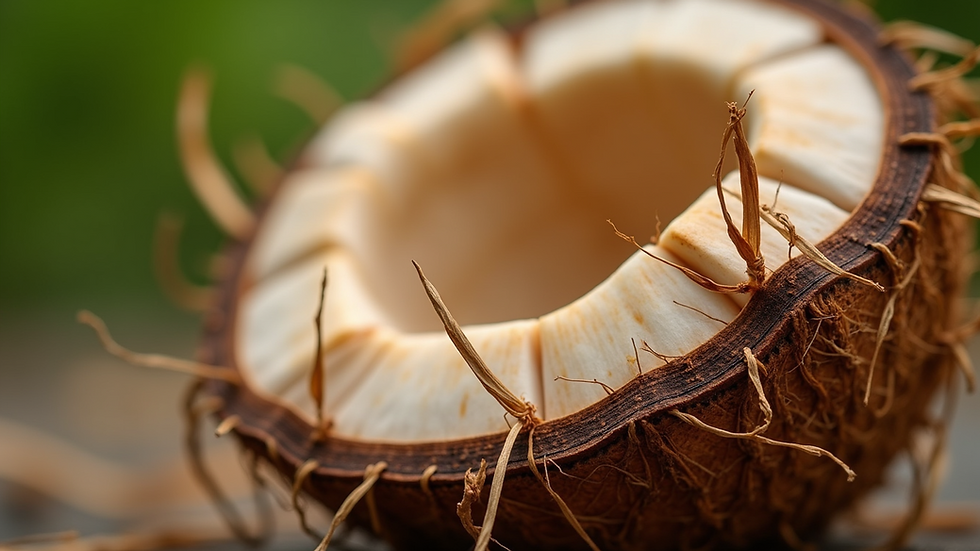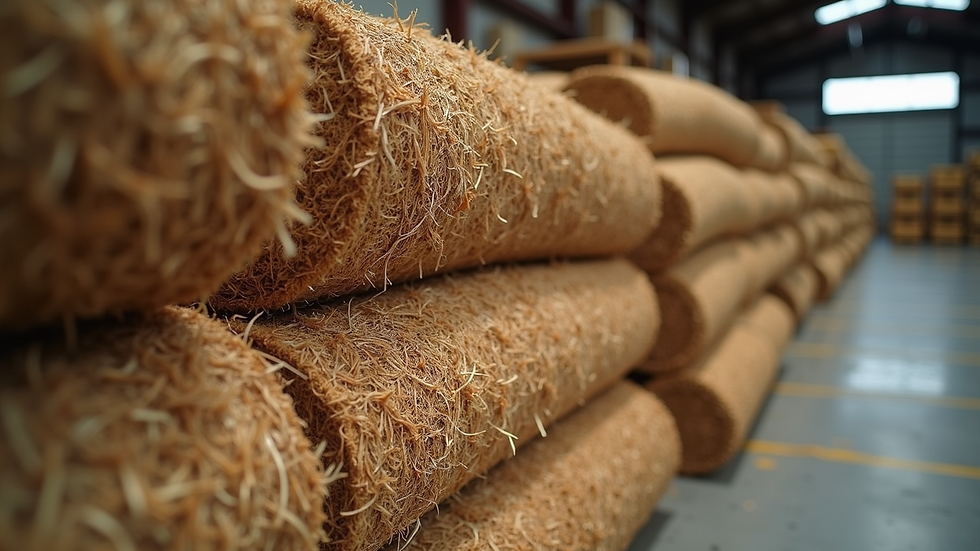Understanding the Versatility of Coconut Byproducts
- Zira Coir Industry

- 3 days ago
- 4 min read
Coconuts are more than just a tropical fruit enjoyed for their refreshing water and creamy flesh. Every part of the coconut has a purpose, especially the byproducts that often go unnoticed. These byproducts have found their way into various industries, from agriculture to manufacturing, showcasing their incredible versatility. This article explores the many uses of coconut byproducts, their benefits, and practical applications that highlight their value.
Exploring Different Coconut Byproducts and Their Uses
Coconut byproducts come from different parts of the coconut fruit and tree. The most common byproducts include coconut husk, coir fiber, coconut shell, coconut water, and coconut oil residue. Each of these has unique properties that make them useful in different sectors.
Coconut Husk: The fibrous outer layer of the coconut, often used for making coir, a natural fiber. It is durable and water-resistant, making it ideal for mats, brushes, and ropes.
Coir Fiber: Extracted from the husk, coir is used in mattresses, upholstery, and erosion control mats.
Coconut Shell: Hard and dense, the shell is used to make charcoal, handicrafts, and activated carbon.
Coconut Water and Oil Residue: These are byproducts from food processing industries and are used in animal feed and fertilizers.
The versatility of these byproducts is evident in their wide range of applications. For example, coir fiber is a sustainable alternative to synthetic materials in gardening and home decor. The coconut shell’s hardness makes it perfect for eco-friendly kitchenware and decorative items.

The Economic Impact of Coconut Byproducts
Coconut byproducts contribute significantly to local economies, especially in tropical regions where coconuts are abundant. Small-scale farmers and artisans benefit from the additional income generated by processing these byproducts. For instance, the demand for coir products has created jobs in rural areas, supporting livelihoods and promoting sustainable practices.
One important factor influencing the market is the coconut husk price per kg. This price affects the cost of raw materials for manufacturers and the profitability for producers. Keeping track of market prices helps businesses plan their production and sales strategies effectively.
Moreover, the global push for eco-friendly and biodegradable products has increased the demand for coconut byproducts. Industries are now investing in research to develop new applications, such as biodegradable packaging and natural fiber composites, which further boost the economic potential of these materials.

What is the Lifespan of a Coconut Husk?
Understanding the lifespan of a coconut husk is essential for its effective use in various applications. The coconut husk is naturally resistant to decay due to its high lignin content, which protects it from microbial attack and moisture damage.
Typically, a coconut husk can last anywhere from 3 to 5 years when exposed to outdoor conditions. However, this lifespan can vary depending on factors such as climate, humidity, and how the husk is processed or treated. For example, husks used in erosion control mats or garden mulch may degrade faster due to constant exposure to soil microbes and weather.
Proper treatment and preservation methods can extend the lifespan of coconut husks. These include drying, chemical treatments, or combining the husk with other materials to enhance durability. Knowing the lifespan helps manufacturers and users plan for replacement cycles and maintain the quality of their products.

Practical Applications of Coconut Byproducts in Daily Life
Coconut byproducts have found their way into many practical uses that benefit everyday life. Here are some notable examples:
Gardening and Agriculture
Coir fiber is used as a growing medium for plants, replacing peat moss. It retains moisture well and improves soil aeration.
Coconut husk chips are used as mulch to conserve soil moisture and prevent weed growth.
Home and Furniture
Coir mattresses and cushions provide firm support and are naturally resistant to dust mites.
Coconut shell is crafted into bowls, spoons, and decorative items, offering eco-friendly alternatives to plastic.
Industrial Uses
Activated carbon from coconut shells is used in water purification and air filtration systems.
Coir mats and brushes are durable and biodegradable, ideal for cleaning and floor protection.
Animal Care
Coconut husk fibers are used in pet bedding and reptile terrariums due to their moisture retention and cushioning properties.
These applications demonstrate how coconut byproducts contribute to sustainability by reducing waste and replacing synthetic materials.
Future Trends and Innovations in Coconut Byproduct Utilization
The future of coconut byproducts looks promising as innovation drives new uses and improved processing techniques. Researchers are exploring ways to enhance the properties of coconut fibers for use in composite materials, which can be applied in automotive and construction industries.
Biodegradable packaging made from coconut husk and shell is gaining attention as companies seek alternatives to plastic. Additionally, advances in biochar production from coconut shells offer solutions for soil enhancement and carbon sequestration.
Sustainability remains a key focus, with efforts to optimize the entire coconut supply chain to minimize waste and maximize value. This includes developing efficient extraction methods and creating high-value products from what was once considered waste.
Businesses and consumers alike are encouraged to support products made from coconut byproducts, contributing to a circular economy and environmental conservation.
By understanding the versatility of coconut byproducts, we can appreciate their role beyond just being agricultural waste. Their diverse applications, economic benefits, and potential for innovation make them valuable resources in building a sustainable future. Whether in gardening, manufacturing, or eco-friendly products, coconut byproducts continue to prove their worth across various industries.




Comments